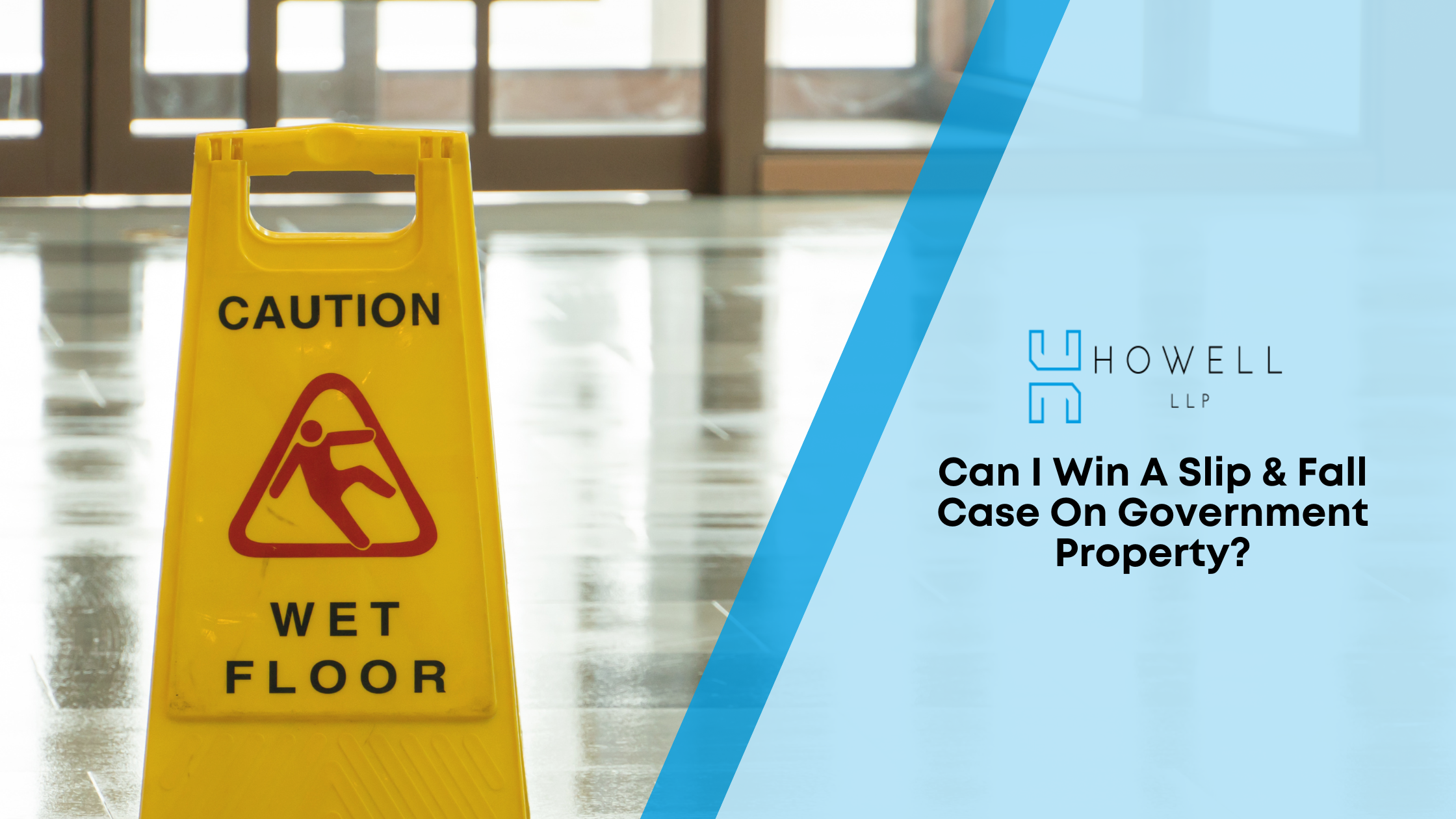Slip and fall cases are far more common than people realize, and they can cause serious harm. The National Flooring Safety Institute (NSFI) has published statistics stating that over eight million go to the emergency room yearly after a fall. The Centers for Disease Control and Prevention (CDC) have said that these injuries cost the victims between $30,000-$40,000 with over $50 BILLION spent on medical bills related to falls for older adults each year.
Though we have published blogs about claiming compensation (that blog is about someone who had to file a lawsuit after being assaulted by an attorney!), what happens if you fall on government property? This scenario presents a unique set of legal challenges. At Howell, LLP, we are accustomed to handling these cases and applying innovative strategies for obtaining the compensation you need.
An Overview of Slip & Fall Cases
The main focus is premises liability in a typical slip and fall case. It requires property owners to maintain safe conditions. When you are injured, you may be able to hold the owner liable. To establish liability, your attorney must prove that the owner was either aware—or should have been aware of it. Furthermore, you have to show that the owner failed to address it. Common causes of these accidents can be tied to conditions such as wet floors, uneven surfaces, or insufficient lighting.
The Unique Qualities of Slip and Falls On Government Property
When you are injured on government property—which includes public parks, sidewalks, or government buildings—there are different legal standards compared to private properties. The biggest hurdle is the doctrine of sovereign immunity, which often protects government entities from being sued. However, there are exceptions, and understanding these is crucial in pursuing a claim against the government.
The procedure for bringing a claim against a government body has stringent notice requirements and shorter filing deadlines. These procedural differences require careful navigation to bring a claim successfully.
The Challenges of Slip and Fall Cases on Government Property
Challenges in slip and fall cases on government property include:
- Establishing Notice: It is essential to prove that a government entity had prior notice of the hazardous condition and failed to rectify it. This often involves an in-depth investigation and gathering of evidence, such as maintenance logs and eyewitness accounts.
- Addressing Sovereign Immunity: Overcoming sovereign immunity is a significant challenge. It necessitates showing that the claim falls within specific exceptions allowed by law, which demands a thorough understanding of legal precedents and state-specific statutes.
- Adhering to Tight Deadlines: Government entities have strict deadlines for filing notices of a claim. Missing these deadlines can result in forfeiting the right to sue. Precise and timely submission of all required documents is crucial.
- High Burden of Proof: In cases against government entities, the evidentiary requirements are typically more stringent. It’s crucial to comprehensively demonstrate each aspect of the claim to establish the entity’s liability.
Howell, LLP
If you’ve been injured on someone’s property or suffered from another personal injury, Howell, LLP will help you get the compensation you need. Our firm has extensive experience with personal injury law because it is our sole focus. We combine in-depth legal knowledge with innovative strategies tailored to your case.
Contact Howell, LLP, for a free consultation. Our experience handling personal injury cases, including car accidents and dangerous property, positions us to provide you with the high-quality legal representation you need.

